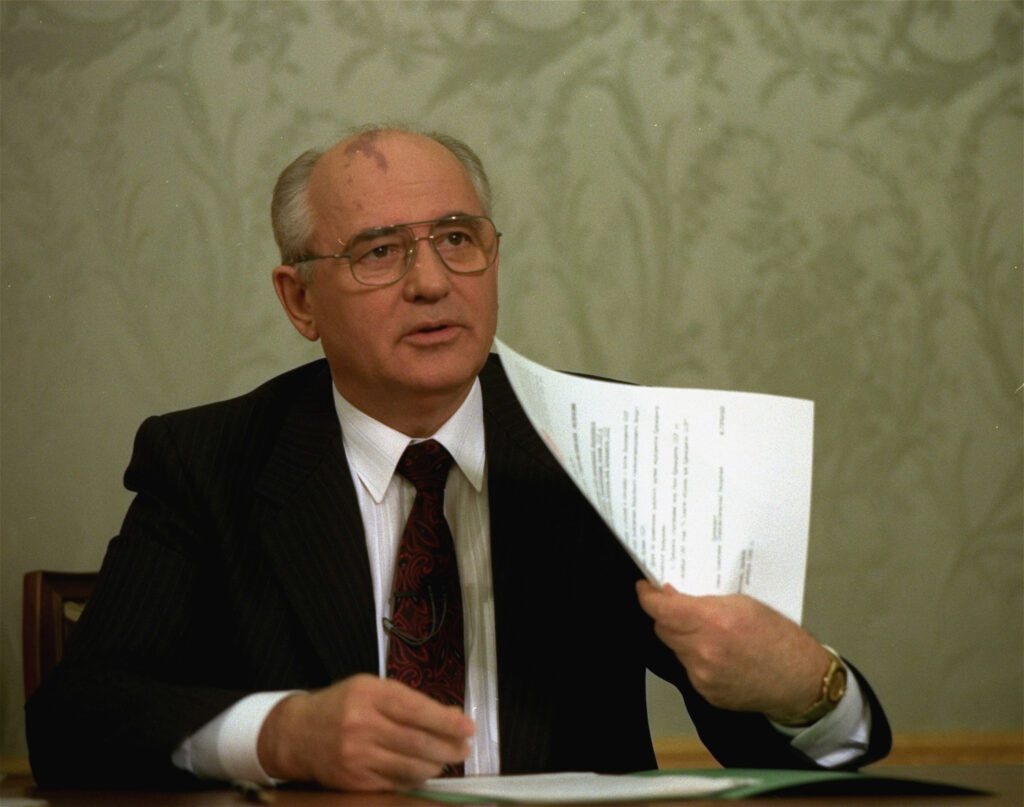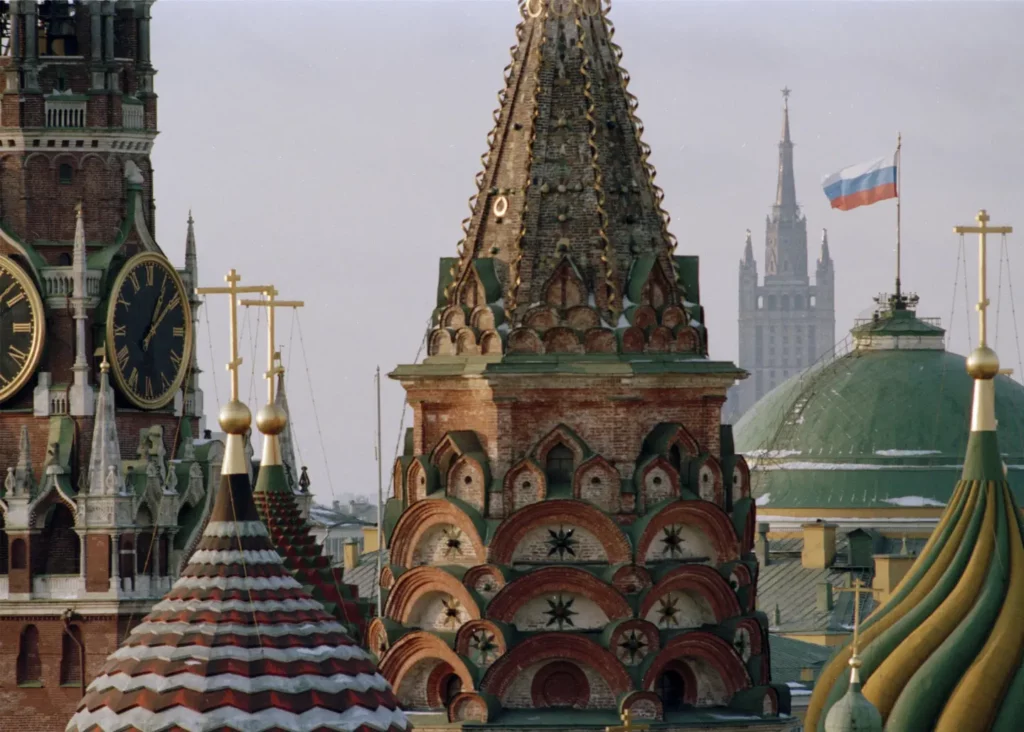Introduction
When the Soviet Union collapsed in 1991, many, including President Mikhail Gorbachev himself, hoped for a new era of democracy for the 15 newly independent republics. With the present-day events, we can see that some of the republics have achieved or are on the way to achieving this goal, almost 32 years later. Nevertheless, too many former republics remain under authoritarian rule. If one looks towards the largest of the former republics, the Russian Federation, the example it sets is that of a country going to great lengths to protect the illusion of democracy for its people, cloaking the corruption and autocracy from their vision. 32 years later, it is clear: the collapse of the Soviet Union hindered democracy in the Eastern Bloc, rather than furthering its cause, as many had hoped. If the Soviet Union had not collapsed, all republics remaining in the Union would be democracies today.
Analysis of the Collapse
To start analyzing the effects of the collapse of the Soviet Union on democracy in the Eastern Bloc, one must understand the circumstances under which the collapse happened. While the West often takes credit for leading to the end of communism in the East, this does not accurately represent reality. Internal political tensions, economic difficulty, and the new generation’s yearning for freedom led to the rise of politicians like Boris Yeltsin, calling for the breakup of the Union. Two polar opposite sides formed: those seeking to obliterate the Union and those seeking to restore it to the previous (oppressive) state. How did the Soviet Union get to this point?
In 1985, the Soviet Union suffered the third loss of a head of state within a period of three years. General Secretaries Leonid Brezhnev died, to be followed by Yuri Andropov, who died, and was then followed by Konstantin Chernenko, who also died (Lewin 267). It was after this that the government sought to install a younger head of state. They selected Mikhail Gorbachev to be the next General Secretary of the CPSU (Communist Party of the Soviet Union), the most powerful position in the nation (Lewin 266). Gorbachev was a strong believer in Leninism and showed exceptional empathy and compassion among the Soviet elites prior to becoming General Secretary. This did not change after he became head of state. As time passed, Gorbachev realized that the Soviet Union was not remaining true to Leninism and had too many issues with corruption and a lack of democracy (Meeting Gorbachev). This led him to start his famous Perestroika (Rebuilding) series of reforms, along with Glasnost (Transparency/Openness).
Perestroika was all about introducing democratic reform and making Soviet society more free and less oppressive, while also transitioning towards a mixed economy, allowing some degree of private enterprise, to better manage supply and demand than central planning could. Glasnost was about increasing the government’s transparency regarding how it operates, such as by releasing many documents previously held secret by the government. Many of these painted the government in a bad light (for good reason). Perestroika, on the other hand, led to the first truly democratic elections held in the U.S.S.R. likely since the days of Lenin. Gorbachev formed the Congress of People’s Deputies, comprised of 2,250 delegates, in 1989 (Taubman 353). This organ of government was designed to separate the Communist Party from the State and allow more freedom and democracy. Shortly after, Gorbachev created the role of President of the U.S.S.R. and the 1990 Presidential Elections were held (albeit the Congress of People’s Deputies selected the president, not the people because of a constricted timeframe). Presidential elections in which the Soviet people could vote were scheduled for 1995, but, as is known now, these never materialized because of the collapse of the Soviet Union. Gorbachev also decided to form the Union of Sovereign States, as a less centralized, new union (Taubman 579).
The hardline communists were in shock at these changes and fought against them. Gennady Yanayev, Gorbachev’s Vice President, was one of them. He, along with several other high-ranking officials, formed the self-proclaimed State Committee on the State of Emergency in August 1991, while Gorbachev was on vacation. The committee attempted a coup to remove Gorbachev from power, which ultimately failed, but led to many member states previously supportive of maintaining the Union in the form of the Union of Sovereign States to lose confidence in the Soviet government entirely (Taubman 608). By this point, the Soviet Union was doomed to fail. Boris Yeltsin, who became President of the Russian SFSR, planned with the presidents of the Ukrainian SSR and the Belarusian SSR to secede from the Soviet Union. On December 25th, 1991, President Gorbachev resigned, giving a speech about how he hopes for a democratic future, and by the 31st of December 1991, the Soviet Union entirely ceased to exist (Taubman 638). Decades later, seeing the faltering of democracy in the Eastern Bloc, Gorbachev would lament giving up power rather than trying more forcefully to preserve the Union (Gorbachev. Heaven).

Figure 1. President Gorbachev holds document handing over control of the Soviet nuclear arsenal to Russian President Boris Yeltsin. The Associated Press

Figure 2. The Russian flag waves over the Kremlin on December 26, 1991. The Associated Press
Now, one might ask, why was this a spectacular failure for democracy? On its own, it was not. At the time, it seemed as though freedom would reign in the Eastern Bloc. Gorbachev, in future interviews, would even hint that he would have sought means to remain in power and maintain Soviet existence if he knew what would come three decades later. Gorbachev thought he was doing the right thing giving all the republics self-determination, but history would prove this entirely reasonable and logical notion wrong. The democratic organs of government formed during Perestroika ceased to exist, and their successors in former republics failed to maintain legitimacy for long.
Analysis of the Russian Federation and Democracy
This leads us to the present day. An analysis of the Russian Federation today is telling in how fragile democracy faced backsliding, and how Russia today brings to mind the Stalin years in the U.S.S.R. Since the 2022 Russian invasion of Ukraine, Russia has experienced a tremendous loss in freedom for its citizens. Russians went from having mostly unrestricted freedom of speech to suddenly not being able to, even indirectly, criticize their government or call for peace. Prior to the invasion, Russians also had mostly unrestricted access to the Internet, where they could access the truth outside of government propaganda. Since the invasion, Roskomnadzor, the Russian agency that controls media, has ordered numerous sites critical of the government or opposing the government narrative to be blocked. Additionally, the Russian government has cracked down on the use of VPNs (Virtual Private Networks), which allowed users to access blocked sites (Etkind 92). Additionally, those who do not support the war effort are subject to being reported by their friends, neighbors, and colleagues.
Given this information, one will naturally wonder: how would this be different if the Soviet Union had not been entirely dissolved? What if even just the core of the Union, which included Russia (“Great Russia”), Ukraine (“Little Russia”), and Belarus (“White Russia”), had remained as one? First, President Gorbachev would remain in power, at least until 1995, at which point the people of Great Russia would be able to reelect him or find a new candidate. Given the strong support for the Communist Party, even after the breakup of the Union, in real life, it is quite possible that without the dissolution of the Union, the next president, even if not Gorbachev himself, would be similarly pushing for democracy, freedom, and a mixed economy. This would effectively be forced on the constituent republics: if the central government pushes for democracy, all subject republics would be democratic.
Infinitely more importantly, however, the Russo-Ukrainian War would never occur, saving likely more than half a million lives (as of November 2023). The other nations in the Eastern Bloc would likely continue to be subject to the influence of this newly democratized Soviet Union, meaning they would be more likely to be democratic. Additionally, nations such as Cuba and North Korea would feel more pressure to democratize. During his tenure, for example, Gorbachev ended financial aid to North Korea, decimating its economy. The Soviet Union would be able to pressure North Korea to democratize using financial aid as a bargaining chip.
At this point, it is important to note a distinction between freedom and democracy. Democracy suggests free and fair elections, while freedom is self-explanatory. One can exist without the other, even though it is rarer. Up until the 2022 invasion of Ukraine, Russia had freedom, despite not being a democracy. Had the Soviet Union not collapsed, it is likely Russia today, along with any other republics of the Soviet Union that remained after 1991, would have both freedom and democracy, but at the very least, it would have democracy. One can argue that this is more important: if people feel restricted, they can simply elect a new government.
Looking to a Lost Future
If the Soviet Union had not collapsed, the 1995 presidential elections would allow the people to select a democratically elected president. The Congress of People’s Deputies, as the new organ of government with power somewhat similar to that of the American legislative branch, would be truly working for the people, rather than for their own interests, and anyone working for their own interests would likely be voted out. The Soviets would likely use their influence to push their more conventional allies towards democracy as well, and, given the good relationship that Gorbachev and Reagan formed, the Soviet Union might even have become an American ally, with both working towards democracy (albeit with vastly different economic systems).
Today, the United States is in constant competition with the People’s Republic of China. From cyberspace, to the military, to Taiwan and the Indo-Pacific region, and even Africa and South America, the U.S. and China are competing for influence. Meanwhile, the U.S. is also fighting, to an extent, a proxy war with Russia, helping Ukraine defend itself, in addition to arming Taiwan against a potential Chinese invasion, and assisting Israel with its war against Hamas. A Soviet Union allied with the United States would likely be of tremendous help in fighting for democracy around the world, especially in areas far closer to it. Together with the United Kingdom, Australia, and the European Union, the Soviet Union and the United States would be able to ensure that democracy had the definite advantage in the competition against autocracy for the 21st Century.
Works Cited
Ėtkind, Aleksandr. Russia Against Modernity. E-book ed., Cambridge, Polity Press, 2023. Kindle.
Giles, Keir. Russia’s War on Everybody and What It Means for You. E-book ed., London ; New York ; Oxford ; New Delhi ; Sydney, Bloomsbury Academic, 2023. Kindle.
Gorbachev, Mikhail Sergeyevich, performer. Meeting Gorbachev. Directed by Werner Herzog and André Singer, produced by Svetlana Palmer and Lucki Stipetic, 2019.
Gorbachev. Heaven. Directed by Vitaliy Manskiy, Icarus Films, 2020.
Landay, Jonathan. “U.S. intelligence assesses Ukraine war has cost Russia 315,000 casualties.” Reuters, 12 Dec. 2023, www.reuters.com/world/us-intelligence-assesses-ukraine-war-has-cost-russia-315000-casualties-source-2023-12-12/. Accessed 13 Dec. 2023.
Lewin, Moshe. The Soviet Century. Edited by Gregory Elliott, e-book ed., Verso, 2016. Kindle.
Medvedev, Sergeĭ. A War Made in Russia. E-book ed., Polity Press, 2023. Kindle.
Plokhy, Serhii. The Russo-Ukrainian War: The Return of History. E-book ed., New York City, W.W. Norton & Company, 2023. Kindle.
Shing, Liu Heung. Mikhail Gorbachev flashes the decree relinquishing control of nuclear weapons to Russian President Boris Yeltsin after its signature at the Kremlin in Moscow on Dec. 25, 1991, drawing a line under more than 74 years of Soviet history. 25 Dec. 1991. The Associated Press, apnews.com/article/europe-russia-ukraine-voting-rights-moscow-2f0a5907e9172c5a7c14451d39752f5d. Accessed 13 Dec. 2023. Taubman, William. Gorbachev: His Life and Times. E-book ed., New York City, W.W. Norton & Company, 2018. Kindle.
Comments are closed